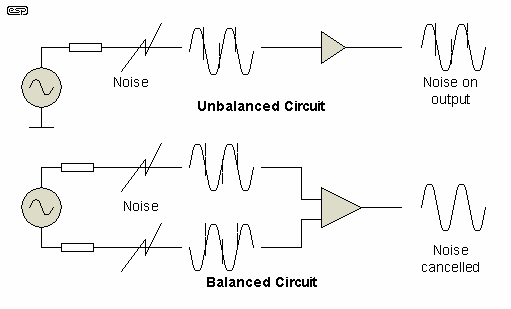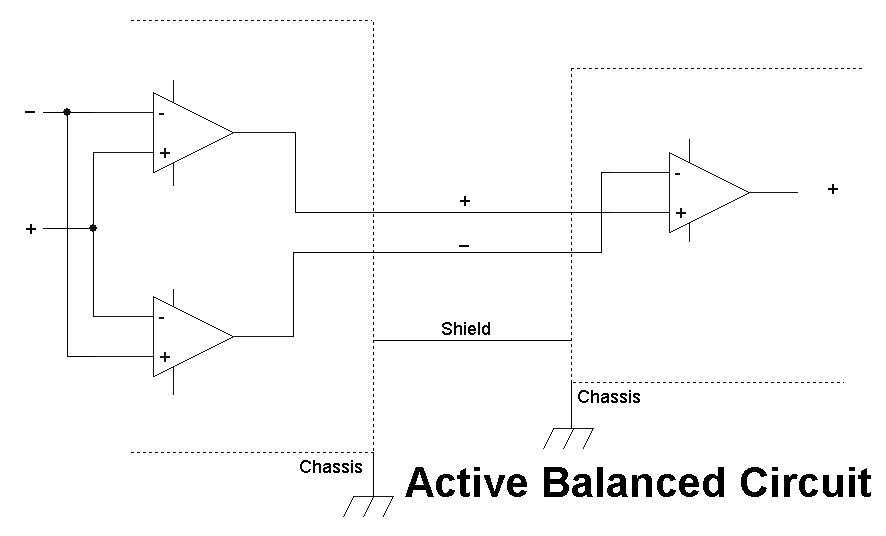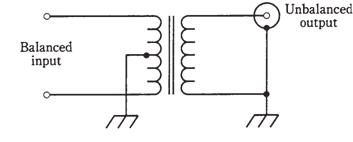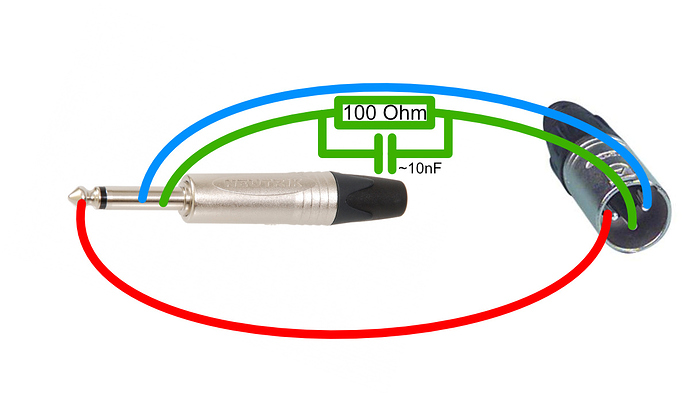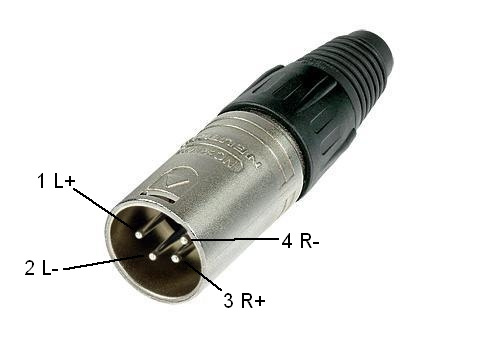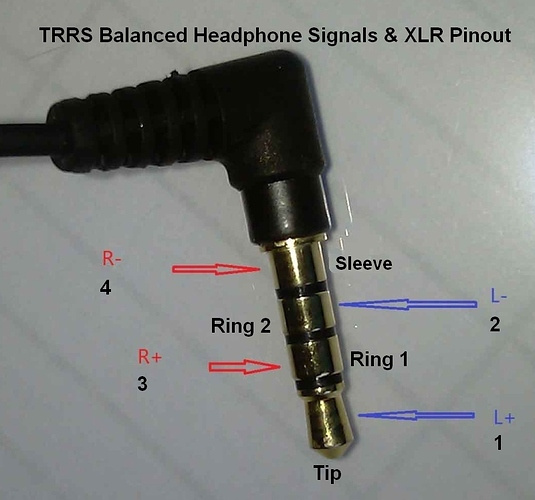Balanced and Unbalanced
And how to turn one into the other
On Balanced, the signals being 180° apart enables you to summ them “loosing” the noise in the process.
Another plus for balanced is the fact the shield (= Ground/GND) does not carry any signal, it soley shields the signal from EMF.
That is all fine and good. Turning unbalanced to balanced is easily done using what is called a DI-Box.
The components in them varies, the concepts are super simple:
Op-Amp balanced (active balanced)
This circuit needs power (to feed the Op-Amps) and creates a “true” balanced signal.
A signal fed in from the left will cause each amplifier to “excite” a voltage in a different direction (180° phase shift).
Transformer balanced (passive balanced)
This method does not require external power, it soley relies on the way transformers behave.
A current flowing in from the coil on the left generates current in the right coil, there magic (= physics) happens:
GND is the negative pole for the +
GND is also the plus pole for the -
You may now ask which one you should buy. I’ll answer that later.
But how do I turn a balanced signal into an unbalanced signal?
With transformer balanced DI-Boxes, you can just plug them in backwards. Simple as that!
But what to do when the stores have closed for the night and you realy need to hook up that one device?
If you look at the transformer balanced circuit again, + to GND is still a complete circuit.
So you can just hook + to Tip (or Pin on RCA), and - to Sleeve. (Or vice versa)
This however is a dirty bodge and you should feel bad for doing stopping at this!
So what to do with the floating ground?
Just soldering the loose pin in the XLR to Sleeve too will probably result in a nasty ground loop.
If you add essentially a low pass filter to the GND connection, it is mostly fine though. As powers are rather low, any 0.6W resistor will do. Capacitor is between 20nF and 5nF.
Congrats! You made your own Pseudo Balanced Cable!
That is great and all, but what DI-Box should I buy?
A big DEPENDS
The passive one will be a set-and-forget installation. For 80% of use cases, a passive one (~$20/20€) will be just fine! The GND-Lift can come in handy.
Active DI-Boxes often got small but helpful features such as attenuation, at the cost of having to change batteries or having to plug in a power adapter.
Am I in the 20%?
Probably not.
Lastly: Don’t spend 200 bucks on $40 worth of hardware. Physics stays the same for everyone!
